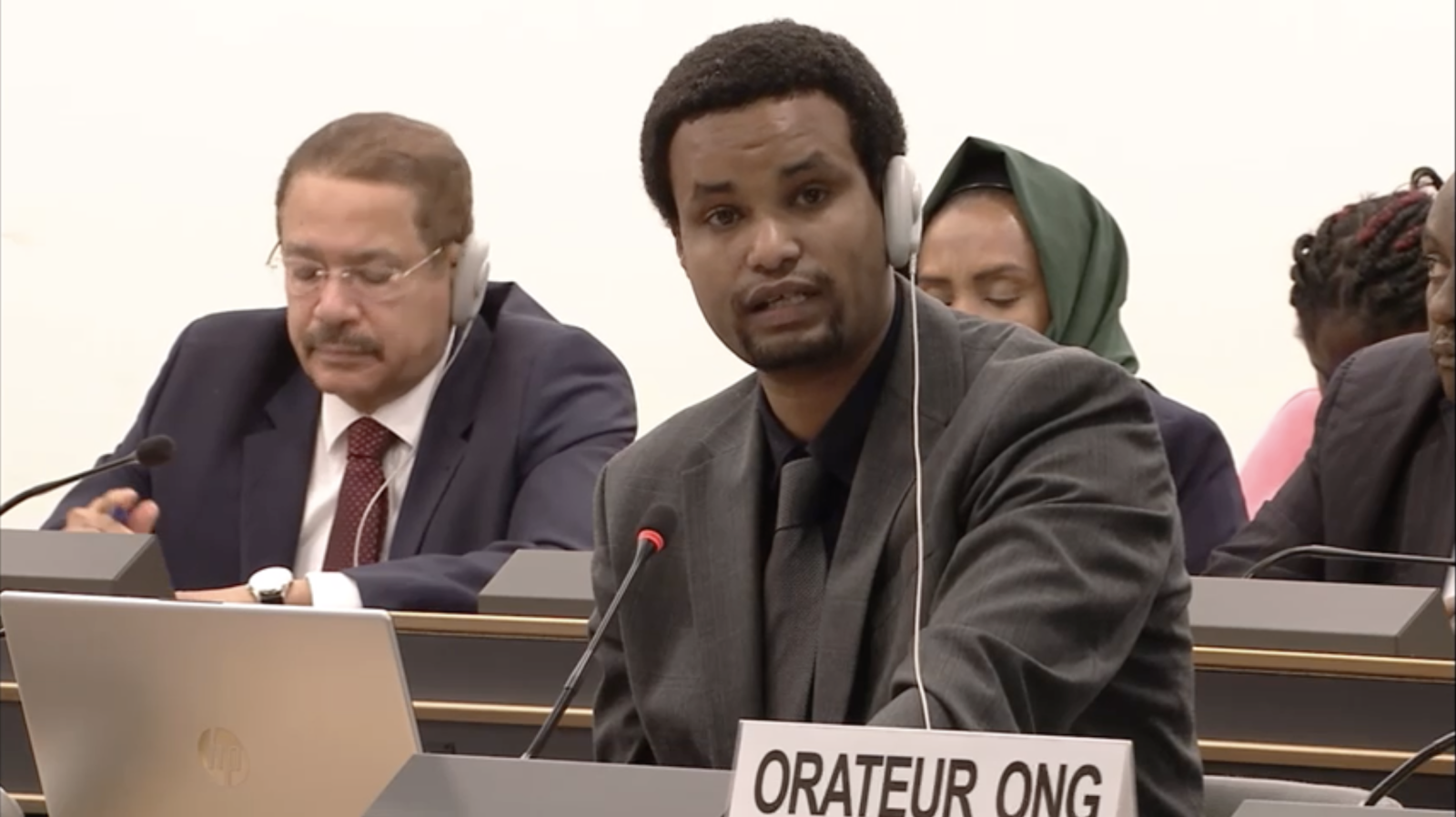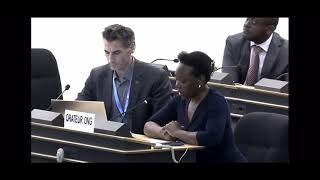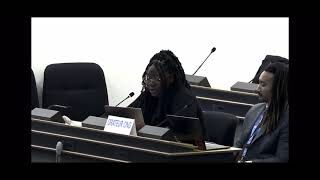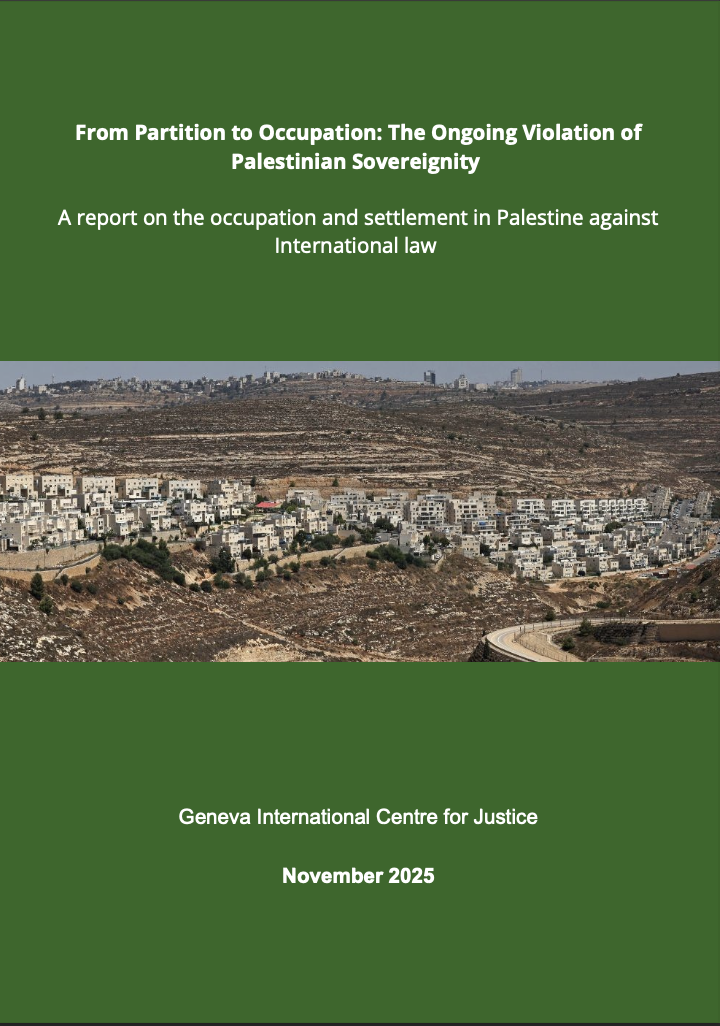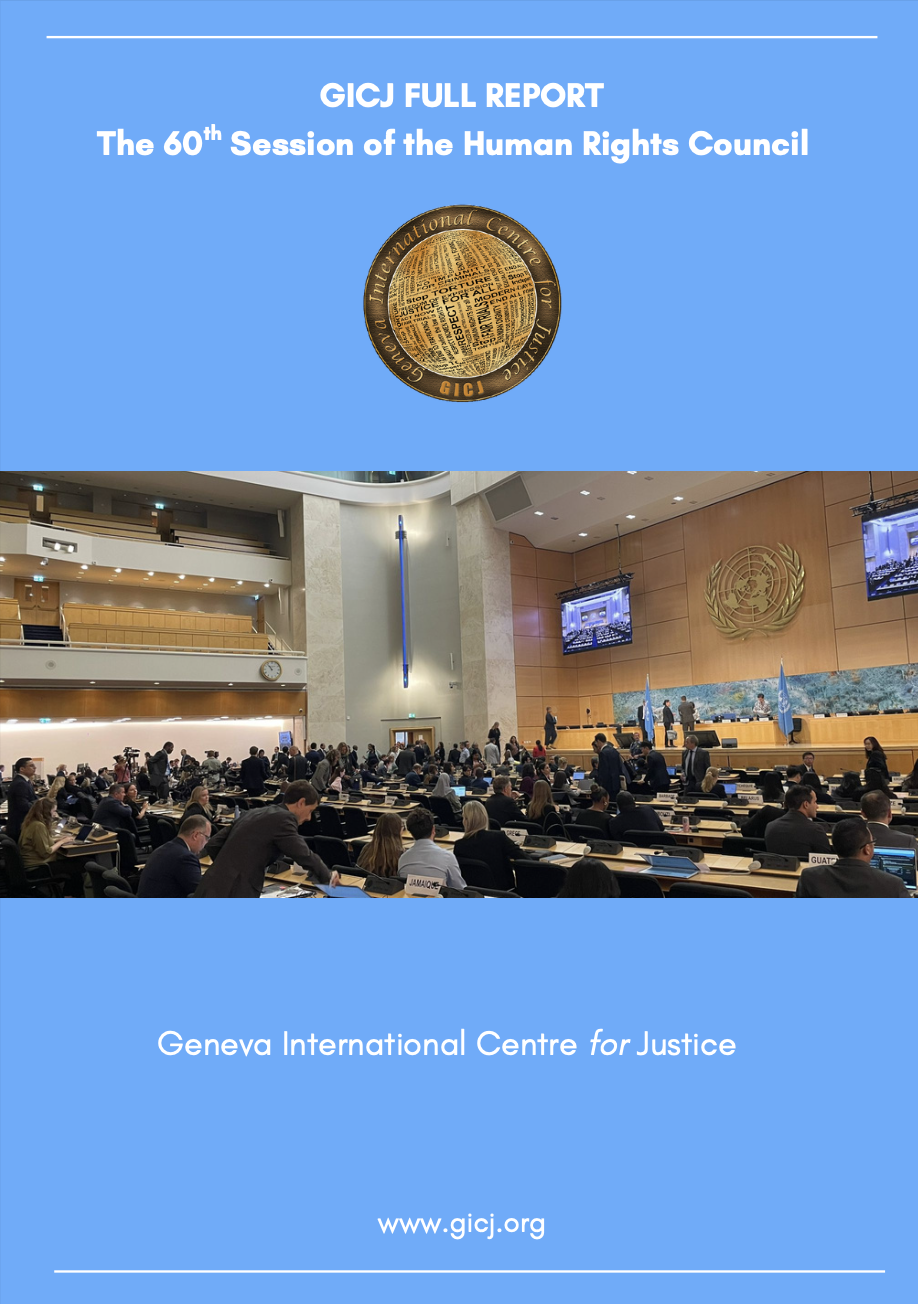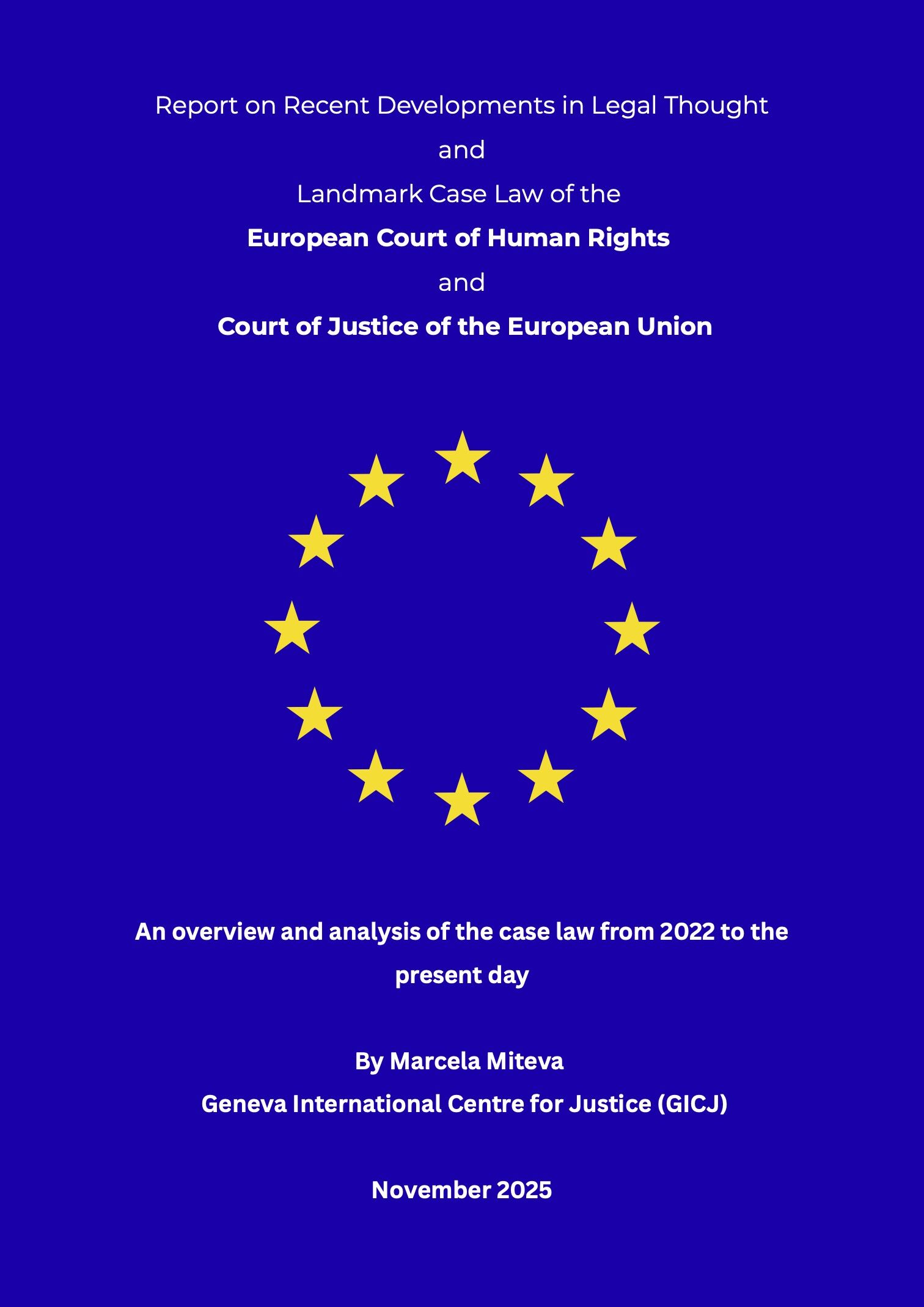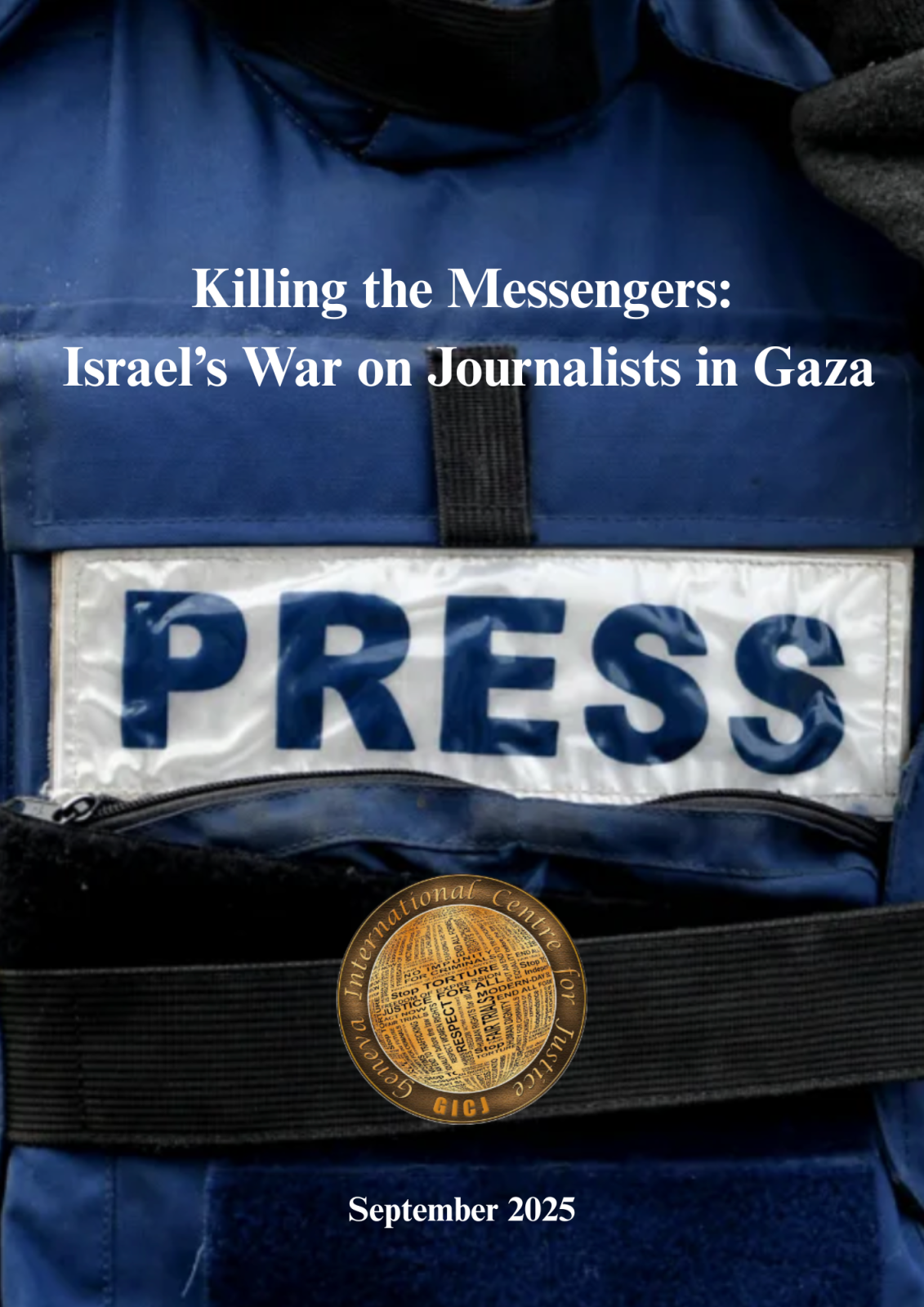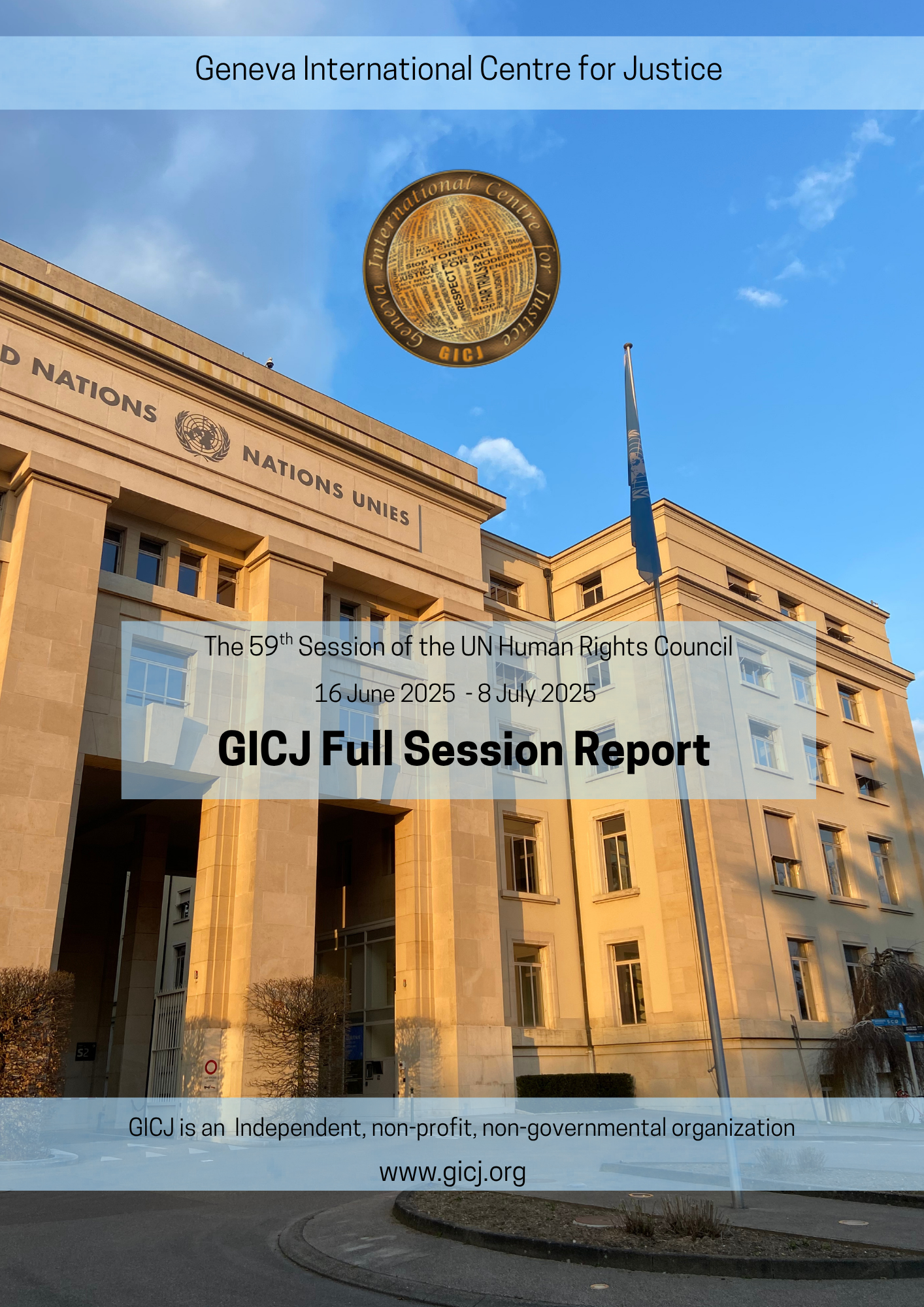06 April 2019
By: Rita Franceschet
25 years after the Rwandan genocide that horrified people from all over the world for its unspeakable brutality and the unfathomable speed at which the life of over 800,000 Tutsi was cruelly cut short, time for reflection and remembrance is still much needed. After the unspeakable horrors of the Shoah, humankind felt an urgent pressure to adopt the Convention on the prevention and punishment of the crime of genocide in 1948, which constitutes a genuine milestone in world history, the world’s deterrent and watchdog to preserve humanity from the spectre of mass atrocities. Even though another milestone in prevention and fight against impunity efforts has been reached with the entry into function of the International Criminal Court, its constraints and limitations with respect to the Rohingya’s tragedy make us engage in a reflection on effective prevention of mass atrocities and genuine accountability mechanisms. For, in the 21st century, the evil of genocide and the spectrum of impunity seem threatening once again humanity’s history. Amidst remembrance and reflection, in the light of recent events involving the Rohingya minority in Myanmar, one moral and ethical reflection imposes itself: have we truly learned the lessons of Rwanda?
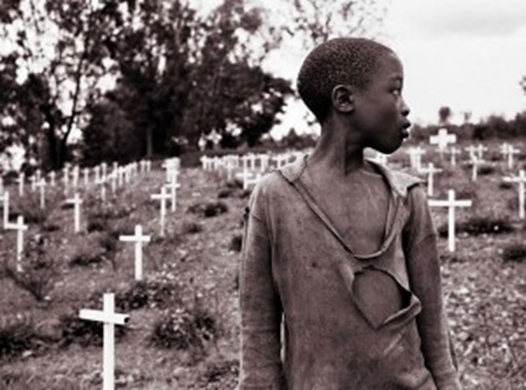
What Tutsi and Rohingya genocides have in common
In both cases, the colonial past forms the historical background of the root causes of the genocide. During the British colonization, both in Rwanda and in Burma the two minority ethnic groups that became victims of discrimination and then genocide have been favoured over the majority by the colonizers. This was the case of the pro-Tutsi policies in Rwanda and the case of the Muslim communities in Burma who benefited from British colonial rule and aspired to an autonomous status.
After their independence, Rwanda and Burma respectively saw their majoritarian ethnic groups coming into power. The principle of democracy based on the dogma that the majority imposes its decisions to the minority and does not listen to the aspirations and criticism voiced by the minorities provoked their uprising and lead to escalating tensions in the society. Both the Burmese and the Hutu majorities in power felt perhaps some resentment from the colonial time when they suffered discrimination and the minority benefited from a better treatment by the colonial powers.
In addition, it is noteworthy to observe similarities in the ways through which incitement to hatred has been publicly disseminated on a large scale through means of communication. In Myanmar, military top officials have been posting messages charged with hate speech against Rohingya on Facebook, similarly to what happened in Rwanda where messages containing explicit incitements to hatred and killing were aired over the radio. It is appalling to note the devastating magnitude of hate speech circulating though social media and the fact that nobody stopped it until the international community discovered that a genocide was perpetrated. Therefore, it is of utmost urgency that the international community questions itself about the worrying lack of governance of social media, about who will be in charge of exercising control on social networks and punish cyber hate speech, and how should be defined the responsibility of private actors such as Facebook for neglectful conduct.
GICJ Position
GICJ urges the international community and the United Nations to closely monitor any situation of crisis, internal turmoil or civil war, state failure, authoritarian coup, revolution, ethnic conflict, in order to be ready for the needed action especially when the situation is leading to violations, including gross and systematic violations of human rights, to prevent future mass atrocities.
To avoid future mass atrocities as the Tutsi’s and Rohingya’s tragedies - while underlying GICJ’s warning some years ago to the international community that episodes of violence in Myanmar could lead to genocide - GICJ calls upon the international community and the United Nations to investigate whether Israel’s illegal settlements, forced evictions, collective punishments, routine use of excessive lethal force and killings, the increasingly oppressive segregation policy and its intention to destroy the Palestinian people could be qualified as crimes against humanity or genocide against the people of Palestine. Similarly, GICJ is deeply worried about the fact that widespread killings, forced displacement, enforced disappearances and other mass atrocities of certain groups in Iraq could one day lead to genocide.
Key words: Rwanda, Myanmar, Burma, Genocide, Convention on the prevention and punishment of the crime of genocide, Justice
Country/Region: Rwanda, Myanmar
Introduction
25 years after the Rwandan genocide that horrified people from all over the world for its unspeakable brutality and the unfathomable speed at which the life of over 800,000 Tutsi was cruelly cut short, time for reflection and remembrance is still much needed. After the unspeakable horrors of the Shoah, humankind felt an urgent pressure to adopt the Convention on the prevention and punishment of the crime of genocide in 1948, which constitutes a genuine milestone in world history, the world’s deterrent and watchdog to preserve humanity from the spectre of mass atrocities. Despite this, less than 50 years later, the evil manifested its most extreme cruelty once again in Rwanda and in Srebrenica, together with the lurking spectre of impunity. The 1948 Convention – even though of crucial importance – manifested its limitations and constraints, namely the lack of a permanent judicial body in charge of investigating and prosecuting the violations of the Convention. When ad hoc tribunals had to be set in place by Security Council resolution to shed light and deliver justice in the aftermath of two genocides, the international community realized that a permanent international judicial authority had to exist to deter future atrocities and ensure accountability. Consequently, the 1998 Rome Statute gave life to the International Criminal Court endowed with subsidiary competence to prosecute genocide, crimes against humanity, war crimes and crimes of aggression. Even though another milestone in prevention and fight against impunity efforts has been reached with the entry into function of the International Criminal Court, its constraints and limitations with respect to the Rohingya’s tragedy make us engage in a reflection on effective prevention of mass atrocities and genuine accountability mechanisms. For, in the 21st century, the evil of genocide and the spectrum of impunity seem threatening once again humanity’s history. Amidst remembrance and reflection, in the light of recent events involving the Rohingya minority in Myanmar, one moral and ethical reflection imposes itself: have we truly learned the lessons of Rwanda?
Historical context of the Rwandan genocide
Kigali, 6 April 1994, 20:26 hrs: the Dassault Falcon50 aircraft carrying President Habyarimana of Rwanda and Burundian President Ntaryamira, both Hutus, was shot down by a surface-to-air missile. The slaughter of the two Hutu Presidents inflamed the Hutu majority in Rwanda who organized a campaign of violence against the Tutsi, deemed responsible for the Habyarimana plane crash. Exactly 25 years ago, on 7 April 1994, only a few hours after the crash, the evil manifested itself once again: the Rwandan genocide started and lasted until July 1994. Over the course of 100 days, the Hutu majority brutally slaughtered more than 800,000 Tutsi, the minority population in Rwanda, making history as the quickest killing spree the world has ever seen.1
The Rwandan people are collectively known as the Banyarwanda. The Rwandan people share the same language and culture, but they are made up of three different ethnic groups: the Hutu (85%), the Twa or Batwa (less than 1%), and the Tutsi (14%) before the scourge of the genocide. Looking at the historical background to understand the root causes of the Rwandan genocide, divisions between various ethnic and social groups could be witnessed in Rwanda, which were exacerbated by European colonizers who perpetrated a pro-Tutsi policy until the Hutu violently revolted in 1959. The Hutu’s uprising against the Tutsi’s historical ruling of the country resulted in the creation of an independent State under the Hutu leadership in 1962, which costed the lives of many Tutsi and pushed many others to flee outside the country. According to experts, the rate of slaughter during the Rwandan genocide was five times higher than that of the Nazi death camps. Hutu ideologues incited peasants to violence over the radio, admonishing them to exterminate the “Tutsi cockroach”. The radio was utilized to not only list the location of specific Tutsis to be targeted, but to also justify the genocide. Radio hosts discussed discrimination the Hutus suffered under the power of the Tutsis. Strong connotations describing Hutus as slaves during colonization painted the Rwandan genocide as a type of slave rebellion. Radio stories were used to anger the Hutus and channel that anger into action. Radio was also used to dehumanize Tutsis by calling them cockroaches, making acts of violence against them seem less inhumane.2
The perpetrators of the genocide also targeted liberal and moderate Hutus and those who refused to participate in the slaughter. Rape was used as a tactic of war and terror during the violence. Hundreds of thousands of women were raped. The exact number is unknown, but it is estimated that between 250,000 and 500,000 women were raped.3 Most were killed afterwards, some were kept as sex slave or left to die of sadness4. The violence ended in July 1994 when the Tutsi-led military group took control of the capital of Rwanda. The genocide left behind it its indelible scars and 300,000 survivors, among them thousands of widows.

Photo credits: United to End Genocide
From Tutsi’s tragedy to Rohingya’s plight: brief historical account of a recent genocide
In the 8th century, the Rohingya people, originally from South Asia, established an independent kingdom in Arakan, a territory which corresponds to the Rakhine state in today’s Myanmar5 (called Burma by the British). Later, they came into contact with Arab traders and developed close ties with Bengal. In 1787, the Burman King Bodawpaya conquered Arakan. In the aftermath, hundreds of thousands of Rohingya seek refuge in Bengal. In the 19th century, the British empire conquered Burma that became a province of British India. Workers were migrated to Burma from other provinces of British India for infrastructure projects. This was an internal movement of populations within the British colonial empire. However, the government of Myanmar still considers that the migration flows which took place during this period were illegal, and it is the reason why Myanmar continues to refuse citizenship to the majority of the Rohingya.
During the Second World War, Japanese troops invaded Burma in 1942, the British were forced to retire, and communal violence broke out. Burmese nationalists attacked Muslim communities who were governed by and had benefited from British colonial rule. Prior to the Japanese invasion, the British had promised an autonomous area for the Muslims of Northern Arakan in exchange for support of the British military forces against Japan. In 1945, Britain recaptured Burma from Japanese occupation thanks to the support of Burmese nationalists led by Major General Aung San, responsible for bringing about Burma’s independence from British rule, who is considered as the father of modern Myanmar. Aug Sang belongs to the Bamar ethnic group, the dominant ethnic group in Myanmar representing 68% of the total population. After the British-Japanese war, some of the displaced Muslims returned with the British, but Rohingya felt betrayed as the British never fulfilled their promise of autonomy for Arakan.
After Burma became independent in January 1948, tensions increased between the government of the newly independent Burma and the Rohingya, many of whom wanted Arakan to join Muslim-majority East Pakistan. Even though this proposal was rejected by the Constituent Assembly, the Burmese government retaliated by ostracizing the Rohingya, treating them as illegal immigrants, and removing Rohingya civil servants from public functions. Authorities imposed limitations on movement upon Muslims from certain regions. Rohingyas were denied the right to citizenship and prohibited from military services. Buddhist villagers replaced Rohingya civil servants in Rakhine State. When in 1977 the Burma Socialist Programme Party seized power, General Ne Win took a hard line against the Rohingya by ordering the Operation Nagamin (Dragon King), a national effort to register citizens and screen out foreigners prior to a national census. By May 1978, more than 200,000 Rohingya had fled to Bangladesh which meant, according to Burmese authorities, that the Rohingya were illegal in Burma. Rohingya reported that the Burmese army had forcibly evicted them and alleged widespread army brutality, rape and murder.
After the 1978 repatriation deal with Bangladesh, in 1982 a new immigration law redefined people who migrated under the British rule as illegal immigrants, including most notably all Rohingya. In the 1990s, similar events as those occurred between 1978 and 1982 took place. Violence broke out also in 2012 and 2016 between the Arakan Liberation army and the Tatmadaw branch of the Burmese army, until mass atrocities have been perpetrated during a military operation that started on 25 August 2017. According to Médecins Sans Frontières (MSF), the military and the local Buddhists killed at least 10,000 Rohingya from August to December 2017.6
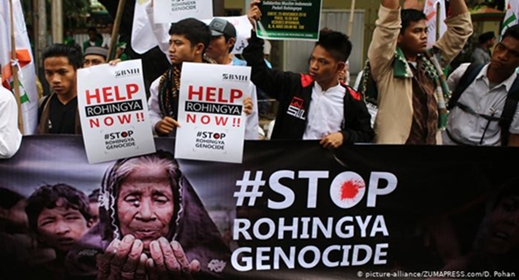
Photo Credits: picture-alliance/Zumapress.com/D. Pohan
On 27 August 2018, the members of the United Nations Fact Finding Mission issued their final report leading to the conclusion that criminal investigation and prosecution should be warranted focusing on the top Tatmadaw generals in relation to the three categories of crimes under International law, genocide, war crimes and crimes against humanity. Myanmar’s military carried out mass killings and gang rapes of Muslim Rohingya with “genocidal intent”. The report also pointed fingers against Nobel Peace Prize laureate Aung San Suu Kyi’s government that allowed hate speech to thrive and failed to use her “moral authority” to protect minorities in Rakhine and elsewhere from war crimes by the army. The military operations were qualified as “grossly disproportionate to actual security threats”. The report further criticized Facebook as the social network failed to censor speech inciting violence and hatred against the Rohingya. Short after the report, Facebook replied it was removing several accounts and pages of top military officials.
What Tutsi and Rohingya genocides have in common
In both cases, the colonial past forms the historical background of the root causes of the genocide. During the British colonization, both in Rwanda and in Burma the two minority ethnic groups that became victims of discrimination and then genocide have been favoured over the majority by the colonizers. This was the case of the pro-Tutsi policies in Rwanda and the case of the Muslim communities in Burma who benefited from British colonial rule and aspired to an autonomous status.
After their independence, Rwanda and Burma respectively saw their majoritarian ethnic groups coming into power. The principle of democracy based on the dogma that the majority imposes its decisions to the minority and does not listen to the aspirations and criticism voiced by the minorities provoked their uprising and lead to escalating tensions in the society. Both the Burmese and the Hutu majorities in power felt perhaps some resentment from the colonial time when they suffered discrimination and the minority benefited from a better treatment by the colonial powers.
Sharing their reflection on the Rwandan genocide twenty years after, two French researchers affirm that the Tutsi genocide was the product of racism, a racism whose roots go back to the colonial era […]. The two Independent Rwandan Republics (1962-1973 and 1973-1994) subsequently continued to ground their legitimacy on the sovereignty of a “majority people” racially defined. This concept of “democracy” based on an ethnic majority developed and spread in the blood of civilians Tutsi during the episodes of recurring slaughters in the 1960s and 1970s, and then between 1990 and 1994.7 Similarly, the Rohingya genocide was dictated by racism and a so-called “democracy” that excluded from any public function, representative national organ and even citizenship the Rohingya community.
Colonialism itself carries several situations of crisis, internal turmoil or civil war8 that facilitate crimes against humanity. Beyond colonialism as one of the triggering factors of genocide, it is important to note that social disorder and State failure also provide a breeding ground for mass atrocities. This is borne out by the in-depth research carried out by the feminist criminologist Nicole Rahn Rafter who points out that “genocides and politicides almost never occur in an otherwise stable environment; instead they usually follow other kinds of state failures, such as revolutions, authoritarian coups, or ethnic wars.9
In addition, it is noteworthy to observe similarities in the ways through which incitement to hatred has been publicly disseminated on a large scale through means of communication. In Myanmar, military top officials have been posting messages charged with hate speech against Rohingya on Facebook, similarly to what happened in Rwanda where messages containing explicit incitements to hatred and killing were aired over the radio. It is appalling to note the devastating magnitude of hate speech circulating though social media and the fact that nobody stopped it until the international community discovered that a genocide was perpetrated. Therefore, it is of utmost urgency that the international community questions itself about the worrying lack of governance of social media, about who will be in charge of exercising control on social networks and punish cyber hate speech, and how should be defined the responsibility of private actors such as Facebook for neglectful conduct.
Have we truly learned the lessons?
If today we are writing this few lines to commemorate the victims of the genocide in Rwanda, it is essentially because we have a duty to preserve the memory of the victims, it is because we have to teach to old and new generations that this barbaric acts shall never happen again in the history of humankind, and it is because the international community has failed in its duty to protect. As human beings, we all bear the scars of the genocide, the heavy burden of one of the darkest pages in the history of humanity. And to call upon the international community to take immediate action to eradicate the evil in Myanmar, otherwise one day we could all become the victims of the same evil.
This day of reflection on the Genocide in Rwanda brings all our thoughts and sympathy to the Rohingya people. Their suffering is our suffering. On this day, we seize once again the opportunity to say never again, to raise awareness about the risks of recurrence and never consign to oblivion the memory. Deplorably, genuine awareness about the drama of Rohingya appears to be lacking, for the vast majority of the international community seems to believe in the Myanmar’s government capacity to deliver justice and engage in sustainable peace. Regrettably, this is wishful thinking. As long as ethnic discrimination will continue, no political representation and recognition of Rohingya as citizens of Myanmar, no lasting peace will be possible in the country. Myanmar is still miles away from a national reconciliation process, for which accompaniment by the international community is much needed.
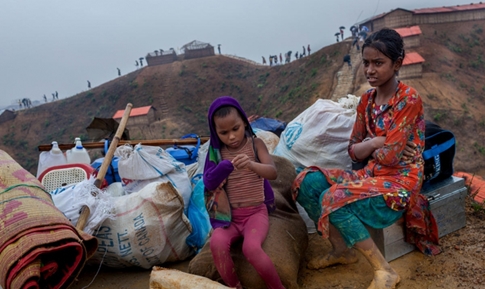
Photo credit: UNHCR/Patrick Brown
On this day of remembrance and reflection, we should also ask ourselves why we where not able to prevent another tragedy despite the existence of legal instruments. Why haven’t we learned the lessons from Rwanda? Why haven’t we heard the Rohingya’s desperate cry? Why the political willingness to refer to the International Criminal Court all the crimes committed in Myanmar is so weak? Why do we continue to accept that the State sovereignty dogma according to which the principle of consent to jurisdiction applies also in case of genocide, crimes against humanity and war crimes? To answers all these questions, we simply must think about the fact that State sovereignty and legitimacy only derive from the trust of the people in their own State, but when a State intentionally kills its people, it loses all its legitimacy and sovereignty. Legitimacy cannot be claimed by killing people. As a conclusion, we all bear the obligation and the responsibility to denounce discrimination and hate speech, prevent mass atrocities, and deliver justice to the victims. We shall not forget that history is a hard judge. We cannot rewrite the history of humankind, but we can write a brighter future for humanity. Let’s write it together.
GICJ Position
GICJ urges the international community and the United Nations to closely monitor any situation of crisis, internal turmoil or civil war, state failure, authoritarian coup, revolution, ethnic conflict, in order to be ready for the needed action especially when the situation is leading to violations, including gross and systematic violations of human rights, to prevent future mass atrocities.
To avoid future mass atrocities as the Tutsi’s and Rohingya’s tragedies - while underlying GICJ’s warning some years ago to the international community that episodes of violence in Myanmar could lead to genocide - GICJ calls upon the international community and the United Nations to investigate whether Israel’s illegal settlements, forced evictions, collective punishments, routine use of excessive lethal force and killings, the increasingly oppressive segregation policy and its intention to destroy the Palestinian people could be qualified as crimes against humanity or genocide against the people of Palestine. Similarly, GICJ is deeply worried about the fact that widespread killings, forced displacement, enforced disappearances and other mass atrocities of certain groups in Iraq could one day lead to genocide.
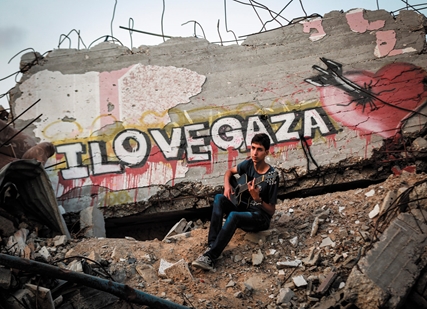
Ali Hassan/Anadolu/Getty Images
Therefore, GICJ makes an appeal to the United Nations and its Member States to immediately take measures to reinforce its strategy to prevent the growing of conflicts around the world and to put an end to gross human rights violations and reinforce the peaceful and human rights based approach of every UN related body or agency, especially for those located on the field.
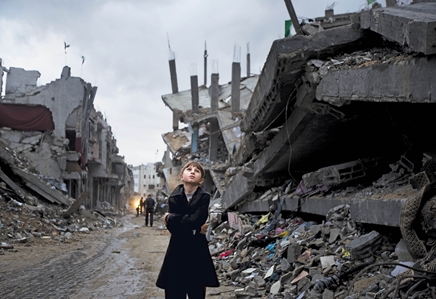
Gaza Photo Credit: Mahmud Hams/AFP/Getty
1. The Rwandan Genocide, United to End Genocide http://endgenocide.org/learn/past-genocides/the-rwandan-genocide/
2. The Rwandan Genocide, United to End Genocide http://endgenocide.org/learn/past-genocides/the-rwandan-genocide/
3. Ibidem
4. Ibidem
5. Burma was the name used by the British. The military junta in power in 1989 changed its name from Burma to Myanmar. For simplicity purposes, Burma/Burmese and Myanmar are used interchangeably in this brief historical account.
6. Rohingya crisis in Bangladesh: A summary of findings from six pooled surveys, MSF, December 2017.
7. Le génocide des Tutsi rwandais vingt ans après, Stéphane Audoin-Rouzeau and Hélène Dumas, 2014 https://www.cairn.info/revue-vingtieme-siecle-revue-d-histoire-2014-2-page-3.htm#.
8. Towards a theory of modern genocide. Comparative genocide research: Definitions, criteria, typologies, cases, key elements, patterns and voids, Christian P. Scherrer, 2007.
9. The Crime of All Crimes: Toward a Criminology of Genocide, Nicole Rahn Rafter, 2016.
Justice, Human rights, Geneva, geneva4justice, GICJ, Geneva International Centre for Justice
International Days of Remembrance articles by GICJ:
|
|
|
|
|
|
| International Women's Day | World Day of Social Justice | Zero Tolerance for Female Genital Mutilation | International Day of Education | International Human Solidarity Day |




